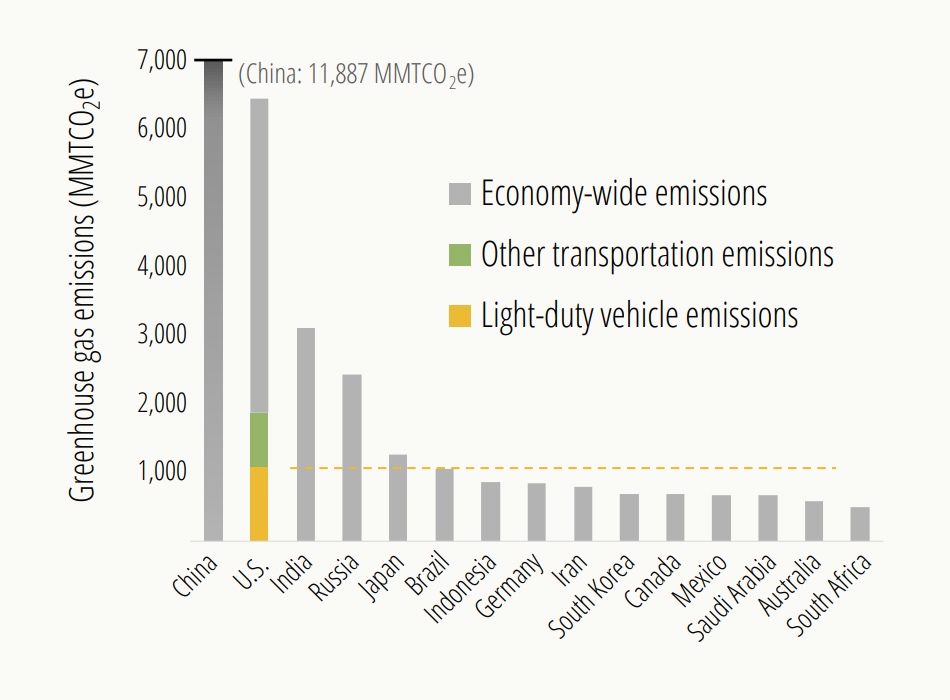
Morgan Hayward
Former Director, Destination: Zero Carbon, Environment America
We identified five key priorities the Biden administration can implement now to accelerate EV adoption through charging infrastructure.
Former Director, Destination: Zero Carbon, Environment America
With infrastructure finally in the spotlight in Washington, one key area being discussed is electric vehicle (EV) chargers. President Joe Biden’s American Jobs Plan calls for 500,000 of them. But setting that total isn’t enough. Environment America has crunched the numbers on our national charging needs and identified five key priorities the Biden administration can implement now to accelerate EV adoption through charging infrastructure.
Electric cars and their charging stations have become such an important part of the debate because of the outsized impact our cars have on air pollution, which harms our climate and our health. America’s number one source of greenhouse gas emissions is the transportation sector, accounting for 28 percent of our total global warming pollution, and 4 percent of the world’s total greenhouse gas emissions.
Drilling down even further, the largest source of transportation emissions, with a 60 percent share, is the cars we drive every day. To reduce our transportation emissions, we need to transition our personal vehicles to EVs.

U.S. light-duty vehicles emit more greenhouse gas emissions than most entire countries
Even when powered on a dirty energy grid, electric cars are still the most climate- and emissions-friendly personal vehicle option. But to get enough EVS on the road, we must bulk up our charging infrastructure.
America has approximately 17,443 public fast charging plugs and 81,725 Level 2 (non-fast charging) plugs as of April 2021. To support a future in which 10 percent of America’s vehicles are EVs – a conservative target for 2030 – America will need more than 47,507 fast charging plugs and 680,000 Level 2 plugs. If the same ratio of chargers to cars applied to supporting 25 percent penetration of EVs, America would need roughly 118,768 fast chargers and 1,700,000 Level 2 chargers.
To jump start this increase, we have identified five key policies counties, states and the federal government can enact to help promote EV adoption and increase access to affordable, easy-to-use and convenient EV charging.
Expand public charging capacity. By increasing incentives and renewing and extending existing tax credits for EV chargers, the federal government can promote investment in EV charging infrastructure. Adoption will be advanced by building chargers on public property and in commercial, residential and municipal developments. We must also make fast chargers available along highways, including those in rural areas. Building more public charging stations can give EV drivers the same access to convenient refueling as drivers of gasoline-powered vehicles.
Make EV chargers more accessible by increasing interoperability. Requiring publicly funded charging stations be accessible to consumers no matter the make of vehicles or plug types will increase access. Consumers should also have multiple payment options, including credit and debit cards.
Increase the visibility and price transparency of public charging stations. Requiring open data from companies receiving public funding or installing stations in public spaces will help consumers. It will enable developers to leverage information to create apps that can assist drivers in finding available chargers. In addition, it will provide policymakers with information about where charging infrastructure improvements are necessary.
Ensure EV spaces are open for EVs. Penalties can prevent non-electric vehicles from occupying charging locations needed for EV drivers. Setting time limits on the use of EV parking spaces and charging idle fees for cars not actively utilizing a charging space’s plug is important to streamline charging when demand is high.
Promote other transportation options to limit overall driving. Expanding access to other forms of zero-carbon mobility and supporting other clean modes of transportation, like EV carsharing, electric buses, transit, walking and biking, will encourage clean travel without requiring the purchase of an EV.
Smart policies for charging infrastructure can help accelerate the shift to clean cars. Transitioning our personal vehicles to EVs is not only feasible, but it is also essential for meeting our greenhouse gas emission goals.
Find Out More
America needs more charging capacity to support mass EV adoption.
Former Director, Destination: Zero Carbon, Environment America
